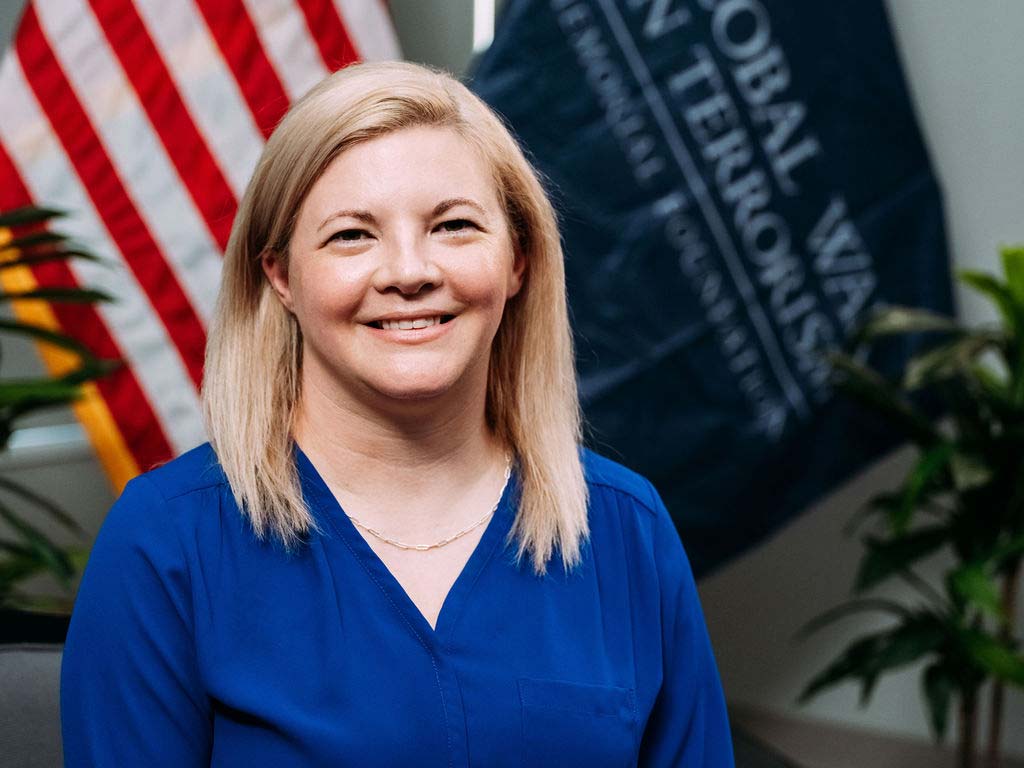Michelle Cannelongo served as a heavy equipment mechanic in the U.S. Army, deploying multiple times during the Global War on Terrorism. As a member of the Global War on Terrorism Memorial Foundation’s Design Advisory Council, she brings firsthand experience of the sacrifices made by service members. She is passionate about ensuring that the Memorial honors those who served and provides a space for reflection and healing.
Q: What inspired you to join the military?
Growing up, I always admired my Uncle John who was a Colonel in the military. I was fascinated when he would come home in his uniform and talk about his travels. I wanted to be like him. In high school, I started considering service more seriously as I saw more classmates enlisting and wearing their uniforms.
Q: What was your role in the military?
I served as a 62 Bravo heavy equipment mechanic in the U.S. Army. My primary responsibility involved maintaining and repairing vehicles. If vehicles were damaged or destroyed, I would conduct battle damage repairs. The goal was always to get the vehicle back into action safely.
Q: Can you describe your first deployment?
As part of the Combat Support Equipment Company, my team was responsible for helping the local community by filling improvised explosive device potholes and building fortified outposts. As an engineer mechanic, I had never worked on Strykers, so it was a very odd experience trying to figure out how to get those vehicles to move because they had more electrical components.
Q: What was your experience like serving on the Female Engagement Team (FET), and how did it impact you?
During my third deployment, I was assigned to the Female Engagement Team (FET) in Afghanistan. FET is a program comprised of female members. On this team, I engaged with local Afghan women and children while assessing their needs and those of the community.
Being with the infantry was an incredibly unique experience because women were not involved before then. Seeing firsthand how Afghan women lived and how they were treated was enlightening. It helped me see another culture and realize how lucky we are as Americans to have choices, education, and freedom.
Q: Your husband also serves on the Foundation’s Design Advisory Council. How did you meet Michael?
We met in Afghanistan when I was assigned to his platoon as the FET. Before meeting him, I had already heard all the warnings about him and how he did not want us females on his team. But as we worked together, he saw that I could handle myself and keep up with the team. We became really good friends and got married during a mid-tour leave.
Q: How did your transition home influence your decision to stay in or leave the military?
I came home a few months before my husband because the military could not station us together. While I was home, I found out I was pregnant, which was both exciting and scary because I was alone. I struggled with whether to stay in the military, but my sister-in-law advised me, “You need to get out to be a parent.”
She explained to me that she never had any time with her daughter and that was one of her biggest regrets. It was also very difficult watching soldiers return home and see how some of the children did not know who their parents were.
Q: How did advice from your husband’s sister influence your decision to leave the military and become a military spouse?
At first, I resented my sister-in-law for a long time. Coming home and transitioning from being a service member to being a military spouse was incredibly difficult.
Being a military spouse is one of the most complex jobs, but as someone who had served, I never understood the full scope of what it means to be a military spouse. Suddenly, my entire purpose shifted from serving my country to running my household, handling the bills, the kids, and everything else. I felt like I had lost my sense of purpose, and I was miserable. But over time, I started to see the strength in being a military spouse and a stay-at-home mom. It was a different service requiring resilience, sacrifice, deep love, and commitment. It took me a while, but eventually, I found my way to embrace it.
Q: What does this Memorial mean to you?
The Memorial represents the sacrifices of those who have served. The spouses who faithfully stood by and held down the home front. The ones who ensured our families did not stop when our husbands left. This Memorial will showcase the strength and commitment to one another, and the service each of us has undertaken to this Nation over this long war.

